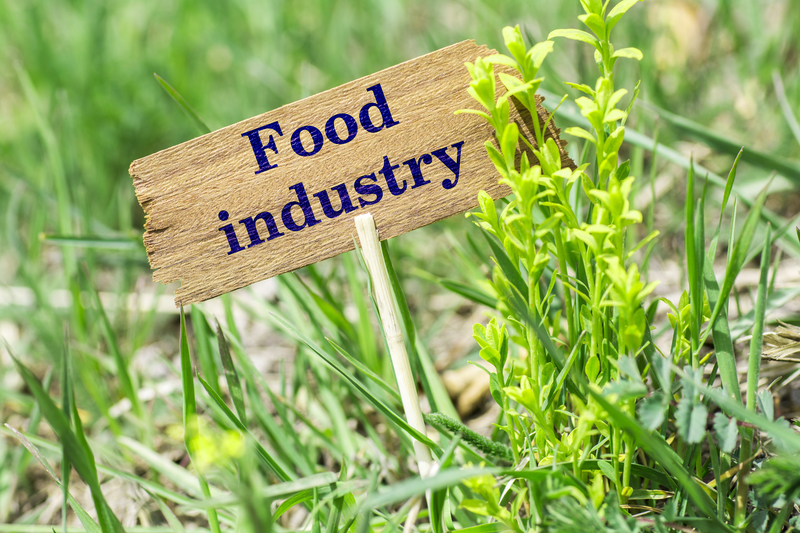MPA Group run through some of the most recent innovations in the food industry, showing how businesses in the sector are adapting to keep up with the demand from a changing world
Like most global industries, the food and drink market is progressing at an incredible rate, with innovation driven by increasing demand, changing consumer landscapes and the need to address serious planetary issues.
Such factors have led to a wave of technological development and the major players have been forced to adapt or fall behind those who do. From the start of the process, producing food, to the way people dispose of the end waste, the whole supply chain is being scrutinised.
Feeding a growing population
The world’s population is growing exponentially – at over 7.5 billion it is more than double what it was in 1970 and the UN expects it to reach 10 billion by around 2050. That’s a lot more mouths to feed and the food industry needs to react quickly in order to meet this soaring demand.
One of the major obstacles in the way of meeting this objective is the lack of land space. Mass producing food, especially staple items like crops, requires huge acreage, and with increasing numbers of people living in cities, rather than rural environments, this can be difficult to find locally. The food industry has, therefore, had to learn to live among the high rises, making use of non-traditional locations and, quite literally, head in a new direction.
This year, for example, the Dutch company Beladon created the world’s first ‘floating farm’, with 40 cows housed on a series of rafts docked in Rotterdam’s port. As explained in an article from the BBC, the central three-story site drastically reduces both the amount of space needed to produce the milk and the environmental impact of the process, with the city location shortening transport distances.
The man behind the idea, Beladon engineer Peter van Wingerden, told the BBC: “With increasing demand for healthy food, fast-growing urbanisation and climate change, we can’t rely on the food production systems of the past any more.”
The President of the World Society of Sustainable Energy Technology, Professor Saffa Riffat, agrees with that sentiment, and his idea to repurpose old coal mines is a perfect example of innovation in the industry. As explained in The Engineer, the abandoned sites are being proposed as potential homes for a revolutionary method of food production – underground farms.
Through a combination of LED lights, nutrient-rich water and other new technologies, the crops receive all the ingredients required for growth. Significantly, as well as not requiring any new land on the surface, the farms would absorb carbon dioxide from the atmosphere, all while producing year-round harvests.
Reducing waste in a world of excess
From supermarkets to factories, to everyday households, food waste is a massive problem. The Food and Agriculture Organisation of the United Nations reports that across the world a staggering 1.3 billion tonnes of food goes uneaten and is wasted each year, which is about one-third of all the goods produced.
Such extreme waste comes at a significant financial and environmental cost. One solution is to increase the number of leftover food distribution centres, so produce is sent out to people who perhaps can’t afford to buy items fresh.
Businesses, however, are also exploring other solutions to the problem.
The UK food technology firm ‘It’s Fresh!’ is looking to increase the shelf-life of perishable fruits and vegetables. According to Packaging News, their new ‘Infinite’ technology can be printed onto packaging and absorbs ethylene, which is the hormone that causes produce to ripen. Morrisons is planning on trialling the new innovation, which is hoped will prolong freshness and reduce the amount of food being thrown away.
Centaur Analytics is also working towards such aims but has instead targeted the immediate post-harvest stage of the production process. According to an article from Forbes, the company is deploying a mammoth network of sensors to simultaneously monitor mass amounts of food, both during storage and transport, to precisely locate sections of the supply chain where decay and waste are most prominent.
Once identified, the system then utilises artificial intelligence technology to automatically assess the data and inform staff members of the most effective ways to minimise this waste.
Future innovation
While major strides have been taken in recent years to tackle the issues within the food industry, far more innovation is needed to ensure such problems are permanently addressed. New technologies will improve all areas of the industry, from production to transport, to waste disposal, and companies are constantly striving to incorporate these into their business models.
With the end of the financial year approaching and new budgets being planned, many enterprises, both large and small, may consider investing time in innovation, pushing the boundaries to the benefit of their industry.
To encourage companies to do so, the government offers R&D tax credits to those investing in innovation. The HMRC UK tax incentive allows businesses to claim back a proportion of their R&D expenditure as tax credits. MPA Groups’s guidance on the Patent Box scheme makes it easy to find out more information if you qualify.












Amazing piece of content. Its very informative. Thank you for sharing. Keep up the good work.